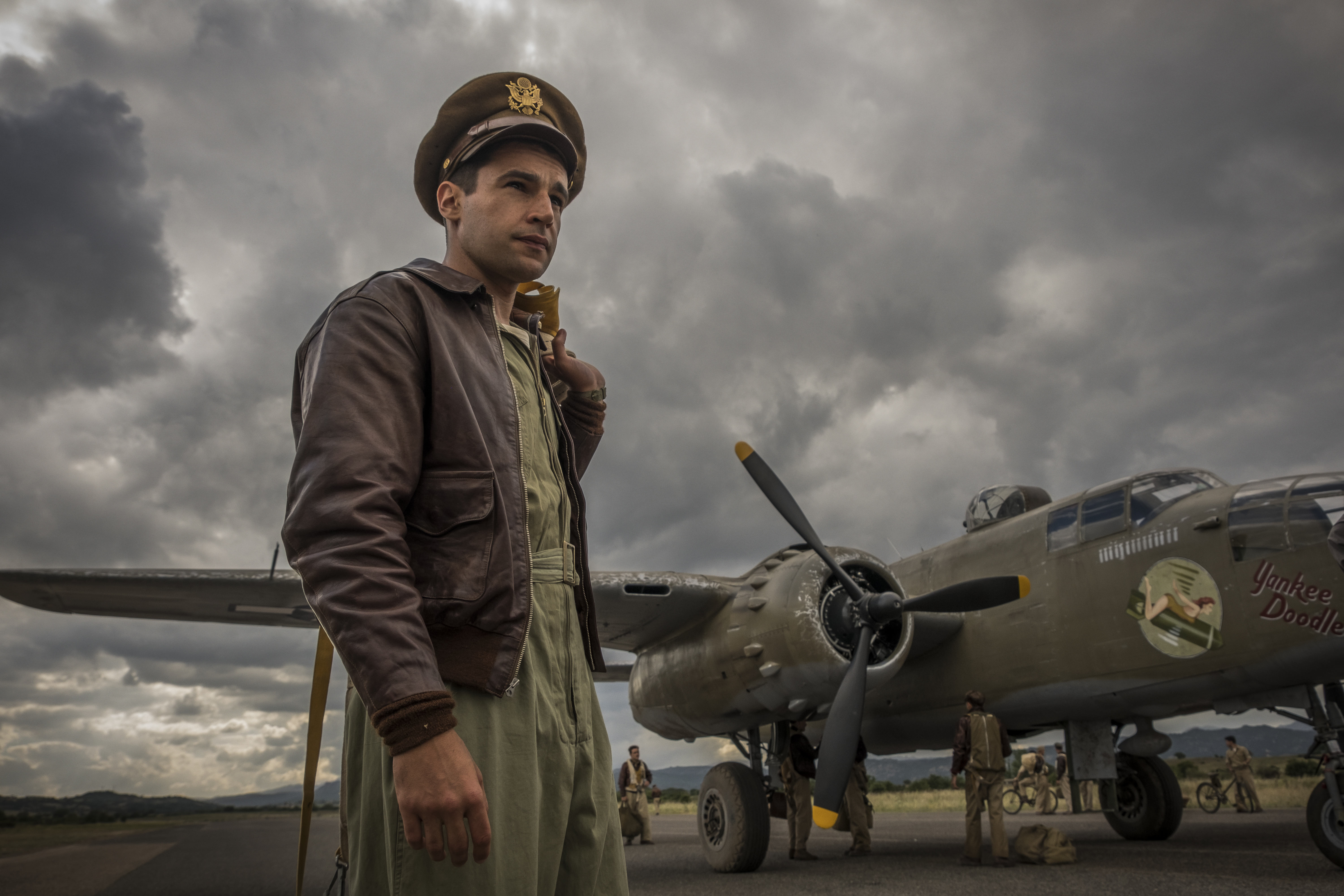Joseph Heller’s famous war novel is vividly recreated in a new streaming miniseries.
Joseph Heller’s Catch-22 is bizarre, polarizing, surreal—and undoubtedly one of the greatest war novels of the 20th century. Inspired by its author’s own experiences as a B-25 bombardier based on Corsica with the 340th Bomb Group, it tells the tale of Captain John Yossarian, a young soldier vexed by the absurdities of military life. He initially attempts to get himself grounded for psychological reasons. Alas, Yossarian soon encounters “Catch-22”: anyone who refuses to fly must be sane; therefore he cannot be grounded. So he continues to fly, even as his commander steadily moves the goal posts; gradually, the mission quota rises from 25, to 30, to 35….
Catch-22 was the inspiration for an iconic 1970 feature film, directed by Mike Nichols and starring Alan Arkin. So why try again? As memorable as the original was, its two-hour running time left many aspects of Heller’s sprawling novel unexplored. The expanded six-hour Hulu miniseries is an ideal vehicle for fully developing characters, themes, and subplots. Unlike the novel, the miniseries unfolds more or less chronologically. Key plot elements are given a fresh feel, including the evolution of con artist Lieutenant Milo Minderbinder’s “syndicate,” which grows from dealing in lamb chops and tomatoes to orchestrating a German air raid on his own base. The performances are exceptional throughout; lead actor Christopher Abbott’s Yossarian carries the story, while directors Clooney and Heslov themselves ably portray the close order drill-obsessed General Scheisskopf and morose flight surgeon Doc Daneeka, respectively.
Aircraft enthusiasts might feel a bit shortchanged: while the 1970 feature film mustered 18 flyable B-25s, this new version makes do with only two, filling in gaps in the formations with computer-generated imagery and skillful editing. But Hulu’s series, made on location in Sardinia, is magnificently shot: the beautiful Mediterranean vistas provide a jarring contrast with the story’s recurring dark moments, plus it’s accompanied by an excellent soundtrack of 1940s music. All told, the series is a worthy small- screen reinterpretation of a classic. ✯
This story was originally published in the August 2019 issue of World War II magazine. Subscribe here.





